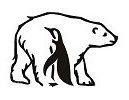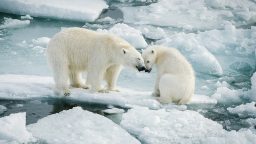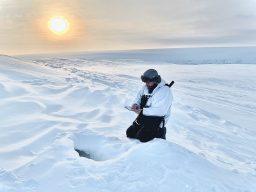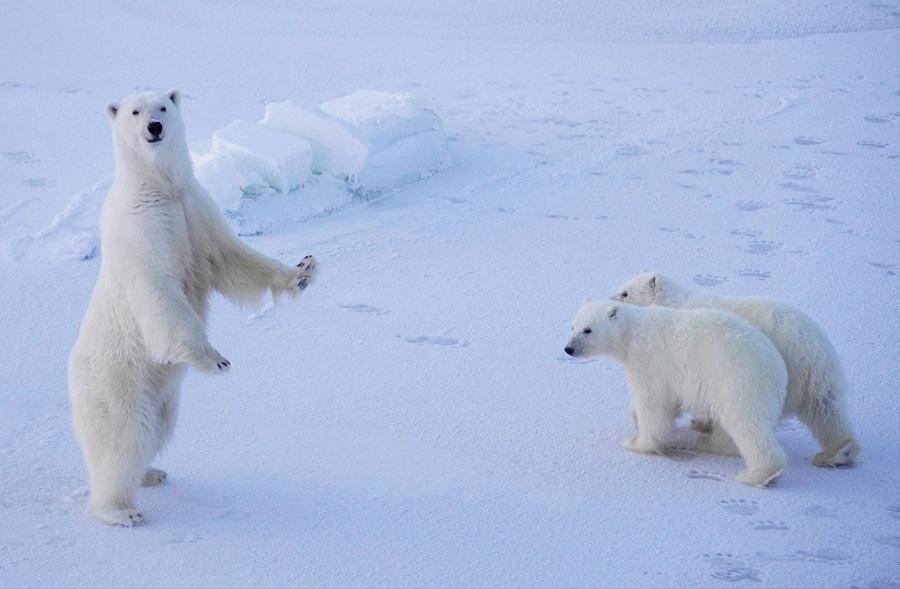
Sibiryakova Island, Yenisei Bay. Photo: Anna / rtraveler.ru
What is he like – a polar bear
Not everyone has seen a polar bear in person. But everyone has known these animals since childhood – they are primarily associated with ice and snow at the edge of the Earth. They doze off to the soft voice of the mother bear, pose on candy wrappers “Bear in the North” and, finally, rub against the earth’s axis somewhere in the world to a familiar motif.
This is a separate species, and it differs from all other bears in the world not only in color. Let’s look at the brown bear: this animal moves exclusively on land, does not choose any particular type of food for itself, an important part of its menu consists of plants – herbs, berries, nuts.
The polar bear, in turn, is perfectly adapted to a semi-aquatic lifestyle in the cold icy waters of the north. It can swim quite fast over long distances and is a full-fledged predator: its entire diet is based on meat and fat. The polar bear is the largest terrestrial predator not only in the Arctic, but also around the world. Males on average grow 2.5 meters in length and weigh 450-600 kilograms.
Polar bears live in the circumpolar regions of the Arctic. These are the only land mammals that spend most of their lives on drifting and soldered sea ice, from where they hunt. Scientists identify about 20 subpopulations of the polar bear. There are four of them on the territory of Russia: Barents Sea, Kara, Laptevskaya and Chukotka-Alaska.
The polar bear’s main tool among drifting ice floes, endless snow and rocks is its powerful snowshoe paws, which are ideal for traveling in the Arctic. Each predator’s paw is the size of a plate – up to 30 centimeters in diameter! This allows bears to walk safely even on thin ice. And while swimming, the front paws act as large paddles, and the rear ones act as rudders.
The black pads of each bear’s paw are covered with small soft papillae. This is his constant “winter tires”: such devices provide reliable grip on the icy surface and prevent the bear from slipping. And the thick fur between the fingers and the pads of the paws saves from frostbite.
The polar bear’s coat is sometimes called “glass”. It is devoid of pigment coloring, and the hairs themselves are hollow. Transparent hairs reflect sunlight, giving the coat a white color. But the unusual properties of the polar giant’s wool do not end there.
In summer, the animal’s coat may turn slightly yellow under the influence of sunlight. Sometimes the color of the fur may appear gray or brown – it depends on the season and lighting. In addition, polar bears can also “turn green”: in zoos located in countries with hot and humid climates, the water in the pool begins to bloom due to the rapid reproduction of blue-green algae, which turn the wool green.
Another curious fact: a polar bear has black skin! Dark pigmented skin helps it absorb solar energy more efficiently. In fact, the polar bear skin works on the principle of a greenhouse to keep the animal from freezing. To do this, a thick layer of fat is hidden under the skin, which not only protects the animal from the cold, but also serves as an energy storeroom.
Polar bears have a special coat structure: its hairs transmit ultraviolet rays, reflecting infrared ones. This, in particular, makes the bears almost invisible to IR cameras. A polar bear has a very good sense of smell: it can detect prey located 1.6 km away from it or under a layer of snow about a meter thick.
How do polar bears survive on ice?
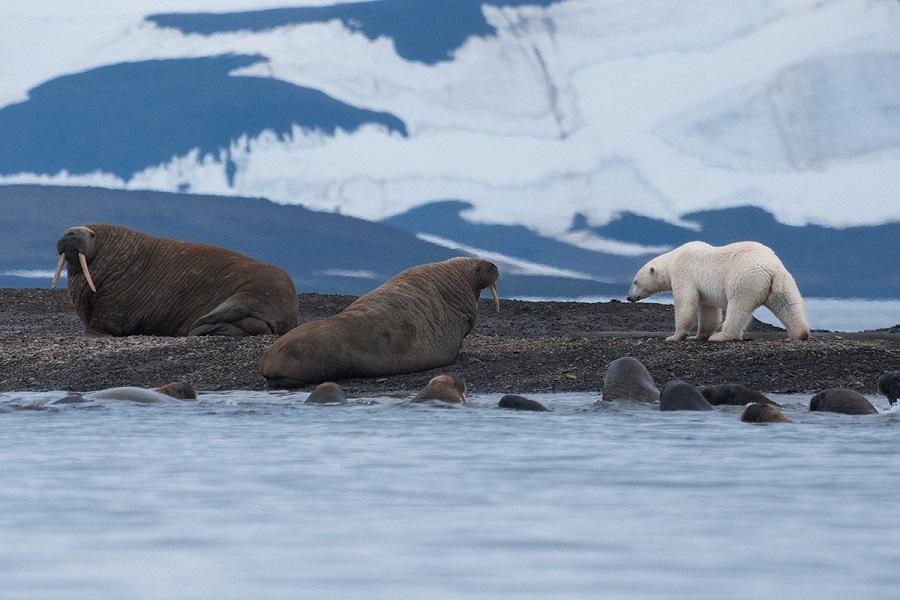
Photo: Nikolai Gernet
Polar bears hunt mainly seals – ringed seals, sea hares and other marine animals. They often roam near walrus rookeries, but they do not always decide to attack – except for a walrus or a weakened and injured individual. With joy, the bears feast on the carcasses of whales that are thrown onto the seashore (and with no less pleasure they feast on other carrion).
Polar bears rely on the sea ice of the Arctic Ocean to hunt seals. The disappearance of ice due to global climate change (which is accelerating in the Arctic) forces animals to move long distances or to the shore to find food for themselves and their young.
The predator has the greatest difficulties with food production in the summer, when most of the ice melts – these bears are not used to hunting land-based fast-moving prey. But in the Russian Arctic they are adapting: They are increasingly harassing land animals to compensate for limited access to seals. Polar bears learn to hunt musk oxen, reindeer, geese and lemmings.
Polar bears are loners, and most of the year they try not to cross paths with each other. However, in summer they are not averse to sharing a meal over the carcass of a dead whale, walrus or deer – in this case, bears quietly dine side by side with their relatives.
In autumn, all pregnant female polar bears dig dens in snowdrifts with a narrow tunnel that leads to 1-3 chambers. When the lair is built, the female falls into a state similar to hibernation there. It is not hibernation in the full sense of the word (and males do not immerse themselves in it), but the heart rate of the bear slows down to 46-27 beats per minute.
The bear’s body temperature does not decrease during this period, as it would with any other hibernating mammal. From about November to February, the cubs are born and stay in the shelter with their mother until spring.
Polar bears are now considered a vulnerable species. But scientists say that all of them may disappear by the end of the century if humanity does not take serious measures to combat climate change. According to them, some polar bear populations have already reached the limits of survival due to the reduction of sea ice in the Arctic.
If in the modern world bears are threatened with mortal starvation due to melting ice and warming, then in the past they had other problems – hunters and poachers. The fishing of polar bears in the north of the Bering Sea and in the Chukchi Sea began in the XVIII century, and the number of polar bears fell especially strongly in the first half of the XX century. Now Wrangel Island is considered the “maternity hospital” of these animals – hundreds of females regularly come here to arrange their dens.
Concerns about the survival of the species led to restrictions on hunting polar bears in various countries as early as the mid-1950s. For example, hunting of polar bears was banned in the USSR in 1956. And in 1973, five countries, including Canada, Denmark, Norway, the USSR and the USA, signed an International agreement on the Conservation of polar Bears – there they agreed to impose a number of restrictions on hunting polar bears and conduct further research on them.
In total, there are about 25 thousand polar bears in the world, of which about 6-7 thousand live in Russia. In Russia, the bear is not only a red Book species, but also a priority species of the federal project for the conservation of diversity of the national project “Ecology”. But monitoring polar bears is not an easy task.
Try and see them among the snow-covered plains and rocks, and all this in harsh Arctic conditions! Considering that polar predators do not stay in groups, but travel alone, the task of counting them becomes three times more difficult. But scientists are developing different strategies to find out how many bears live in a particular area.
Bear Patrol is a link between animals and people
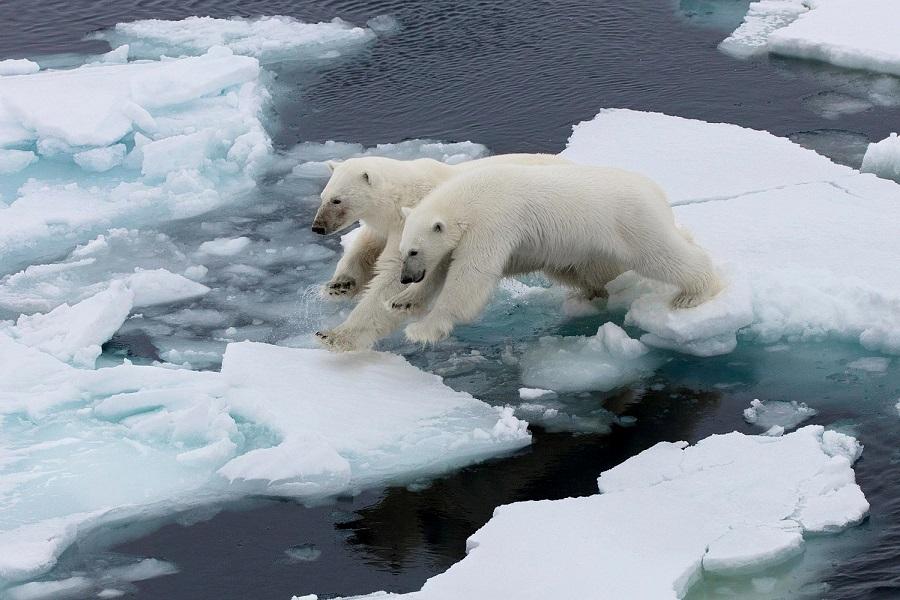
Photo: Nikolai Gernet
The rapid warming in the Arctic greatly complicates the existence of bears: they are forced to adapt, looking for new sources of food. Recently, dozens of polar bears have been coming closer to populated areas and developing territories that are atypical for them. According to the researchers, such migration can pose a serious threat to the northern settlements.
There are more cases of predators entering settlements every year: these problems are already arising in Novaya Zemlya and in the Nenets Autonomous Okrug, in the area of the village of Varandey, where gas and oil processing is actively underway. And in the small Chukchi village of Ryrkarpiy, the situation is further complicated by the fact that nearby, on Cape Kozhevnikov, there are walrus colonies, which predators are not averse to raiding.
“A common mistake people make when encountering bears, for example, in the tundra, is that they underestimate the danger of animals. And they behave as if they are watching a movie: they start shooting videos and taking pictures, they can walk up to a bear and provoke it to attack. In fact, it’s better to stay away from predators, try to move away slowly before they notice you,” says famous polar explorer Anatoly Kochnev.
A polar bear walks cautiously through a walrus rookery. The weight category of a potential “lunch” is clearly not in his favor. Adult walruses may well fight back and emerge victorious from the fight with the bear.
The collision of two worlds — civilized human and wild bear — is already causing Arctic snow giants a lot of suffering. For example, this summer, specialists urgently flew to Dixon Island in the Krasnoyarsk Territory (where the northernmost settlement of Russia with the same name is located) to rescue a bear that came out to people: She had a tin can stuck in her mouth. As a result, the bear was put to sleep with a dart shot, got rid of the jar, treated the wounds and taken away from human habitation, leaving a stock of fish.
Today, 10 out of 40 specially protected natural areas of federal importance in the Arctic have been created in key polar bear habitats. These are five state nature reserves: Wrangel Island, Bolshoy Arctic, Taimyrsky, Ust-Lensky, Bear Islands; three national parks: Russian Arctic, Beringia, Gydansky and two state nature reserves: Severozemelsky and Novosibirsk Islands”.
By Anastasia Krutikova
More amazing facts about the Arctic can be read here.
